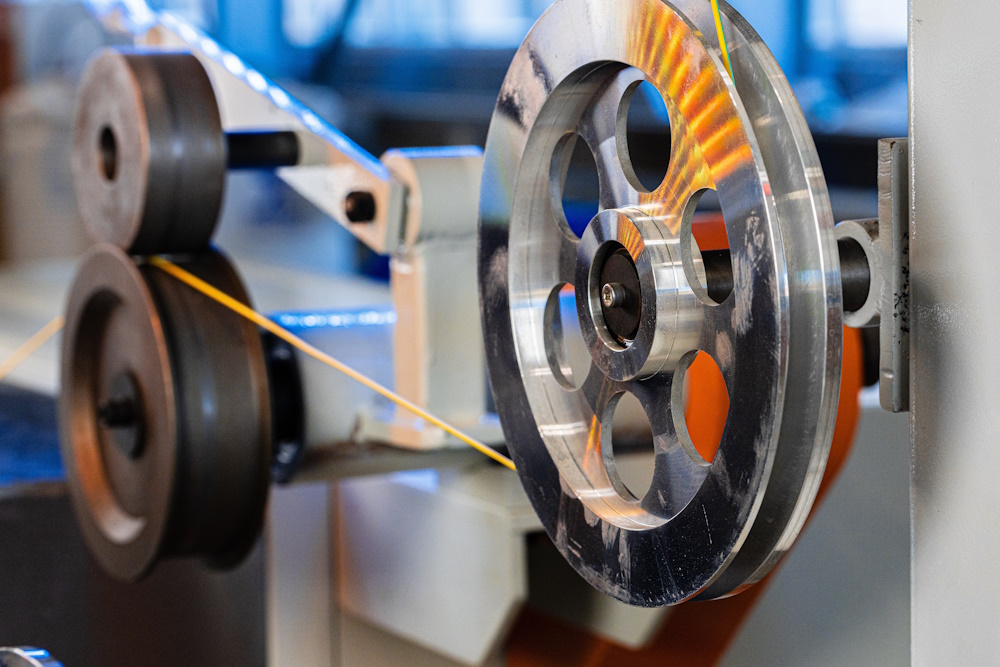
In wire or cable manufacturing, “caterpillar”-type linear capstans employ two belts that rotate at the same speed to pull the product through the processing line at a constant tension. If the capstan’s cable tension is unstable, equipment used for extrusion, winding, paying off or other processes down the line will be out of sync, resulting in diminished product quality and possibly costly damage to the capstan itself. Because constant cable tension is crucial, the system that drives the belts is critical to maintaining a processing line’s precision and, ultimately, delivering a better product. Here’s why the right drive system makes a difference in product quality:
A designer may drive a two-belt system using a differential, or by employing a motor with two rigid fixed gear reducers. The gear reducer approach is prone to variations in the diameter of the belt pulley, which can cause the two belts to run at different linear speeds. Even the slightest speed differences will cause rubbing and slipping between the belts and the product, which in turn causes the products or the belts to wear. And, depending on the application, belt replacement can get expensive.
However, a differential with one input and two outputs in this application balances the torque between the two outputs and, consequently, balances the speed. Therefore, if the belt diameters vary, the linear speed remains the same for the top and bottom belt. The result: no slipping and wear for the wire or cable.
One differential gearbox provides speed reduction and automatically reverses the direction of rotation between the two outputs driving the upper and lower belts. Taken together, the differential performs three functions in the linear capstan: it ensures a constant linear speed; reduces the speed; and reverses the direction of rotation.
For tension applications such as linear capstans, Redex USA has extensive technical expertise and customization capabilities to ensure you implement the best differential for the job. When you provide our experts with your pulling force and linear speed requirements along with the pertinent belt diameters, we can determine the rotational speed and the torque for each element in order to size the differential so each roll applies the right torque. We’ll also calculate the speed of the motor to establish the differential’s gear ratio.
Prevent Wear and System Damage
The quality of your wire and cable product depends on consistent tension throughout line processing. When it comes to driving a linear capstan with two belts, a differential will ensure a constant linear speed of the upper and lower belts to give you greater peace of mind than coping with the variability of a two-gearbox approach. The result: wear-free wire and cable without expensive capstan belt damage. Our sales engineers stand ready to help you select and optimize a Redex differential to drive your critical wire and cable line processing equipment.
For more information about Redex differentials for wire and cable applications, visit our product page.
